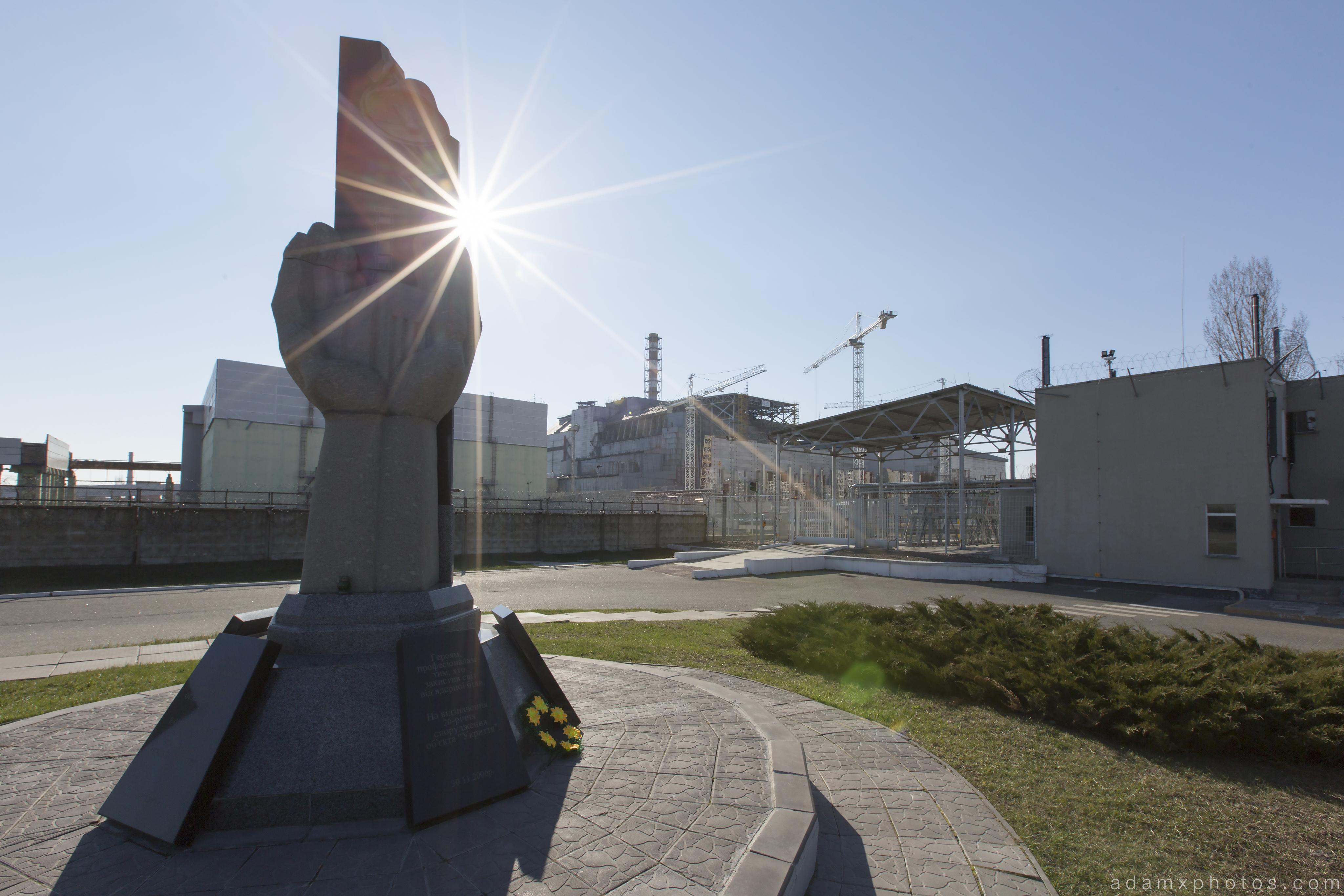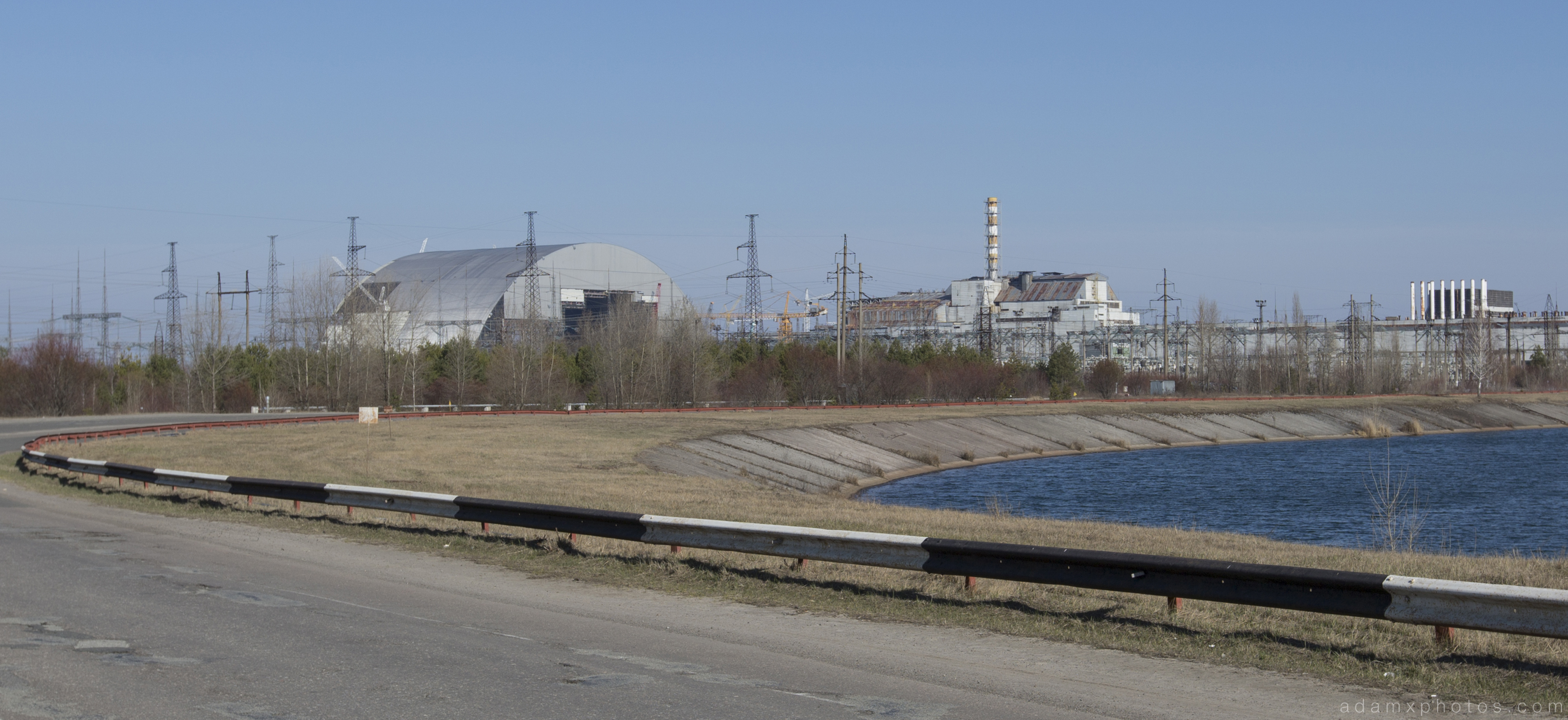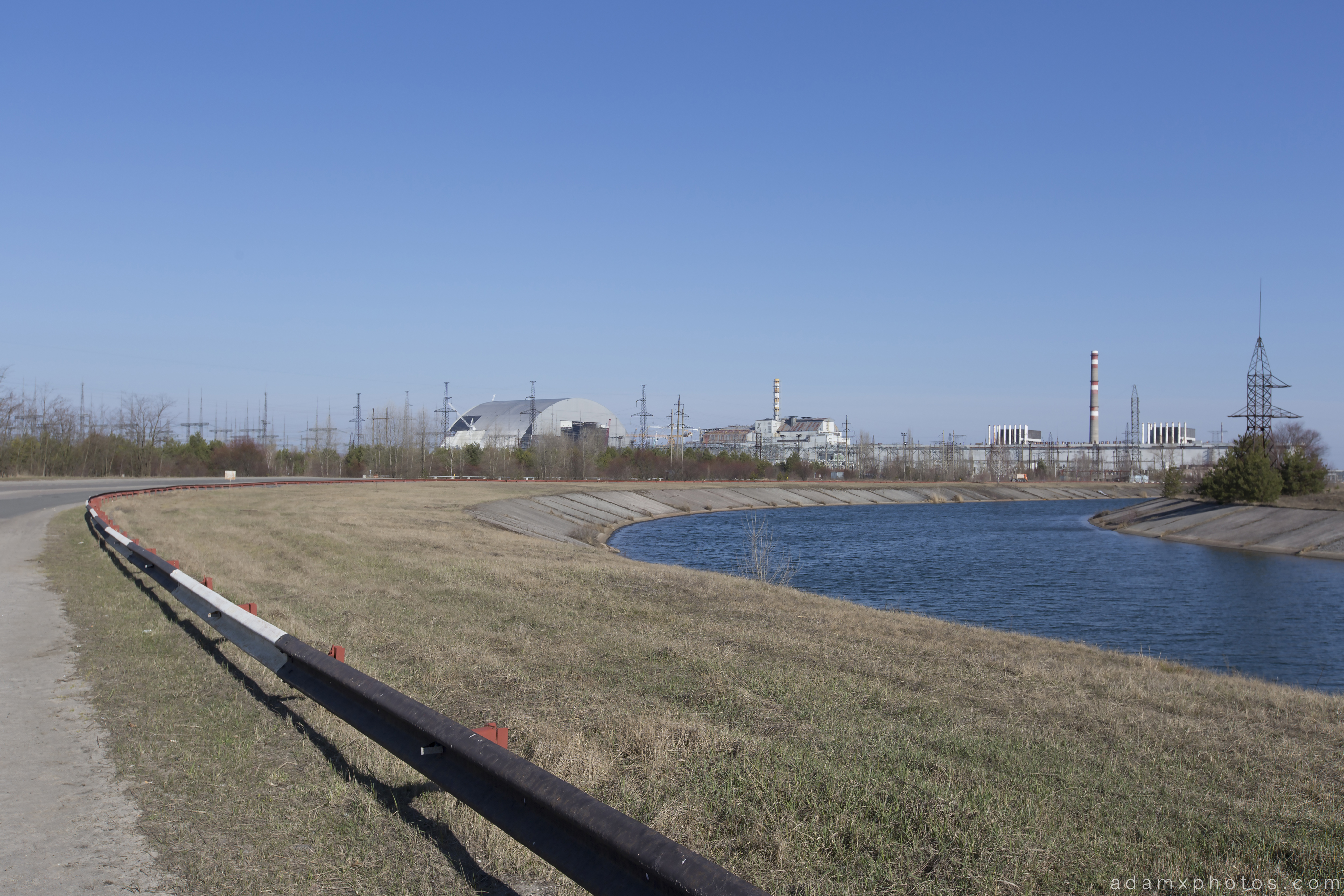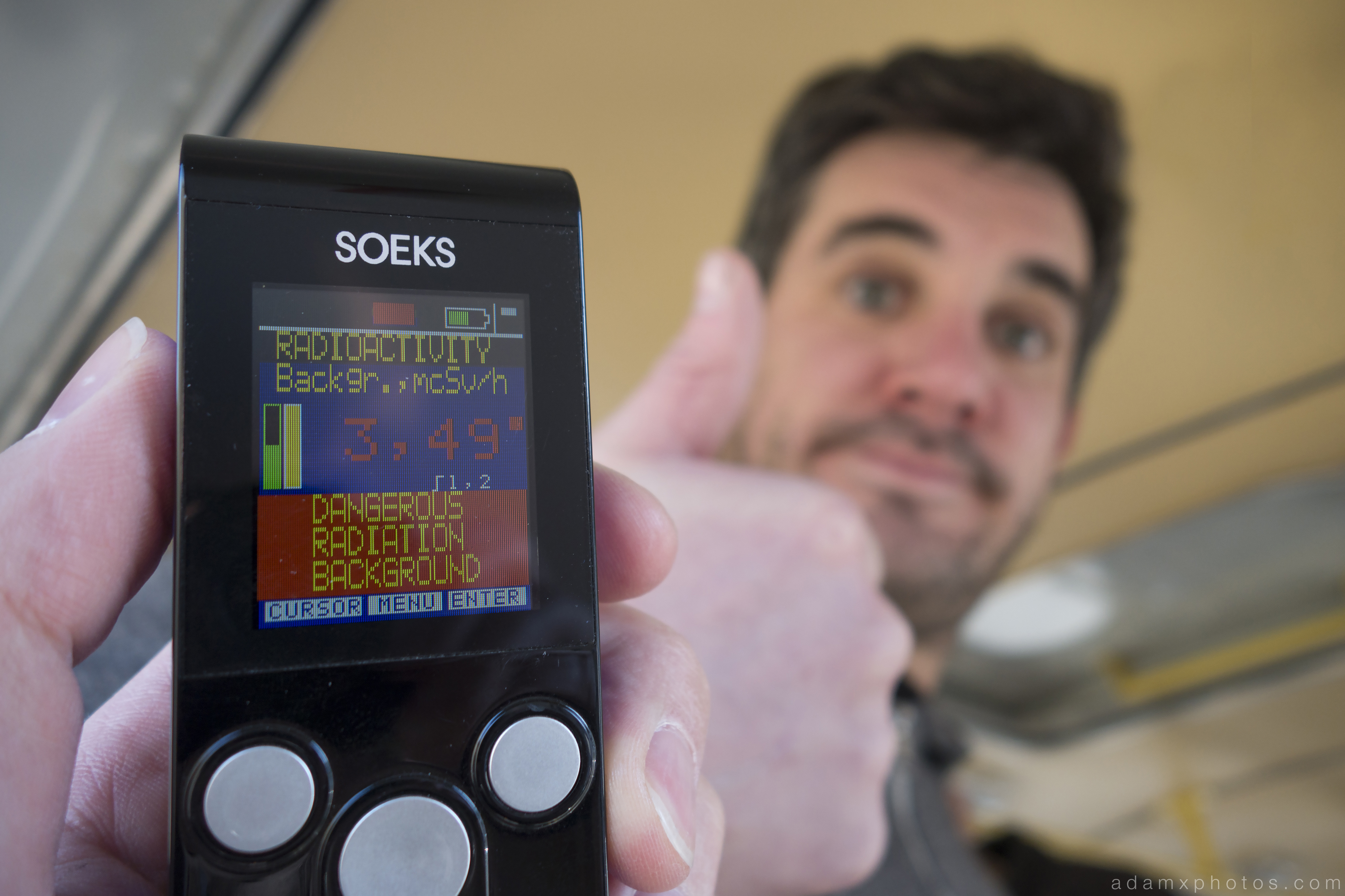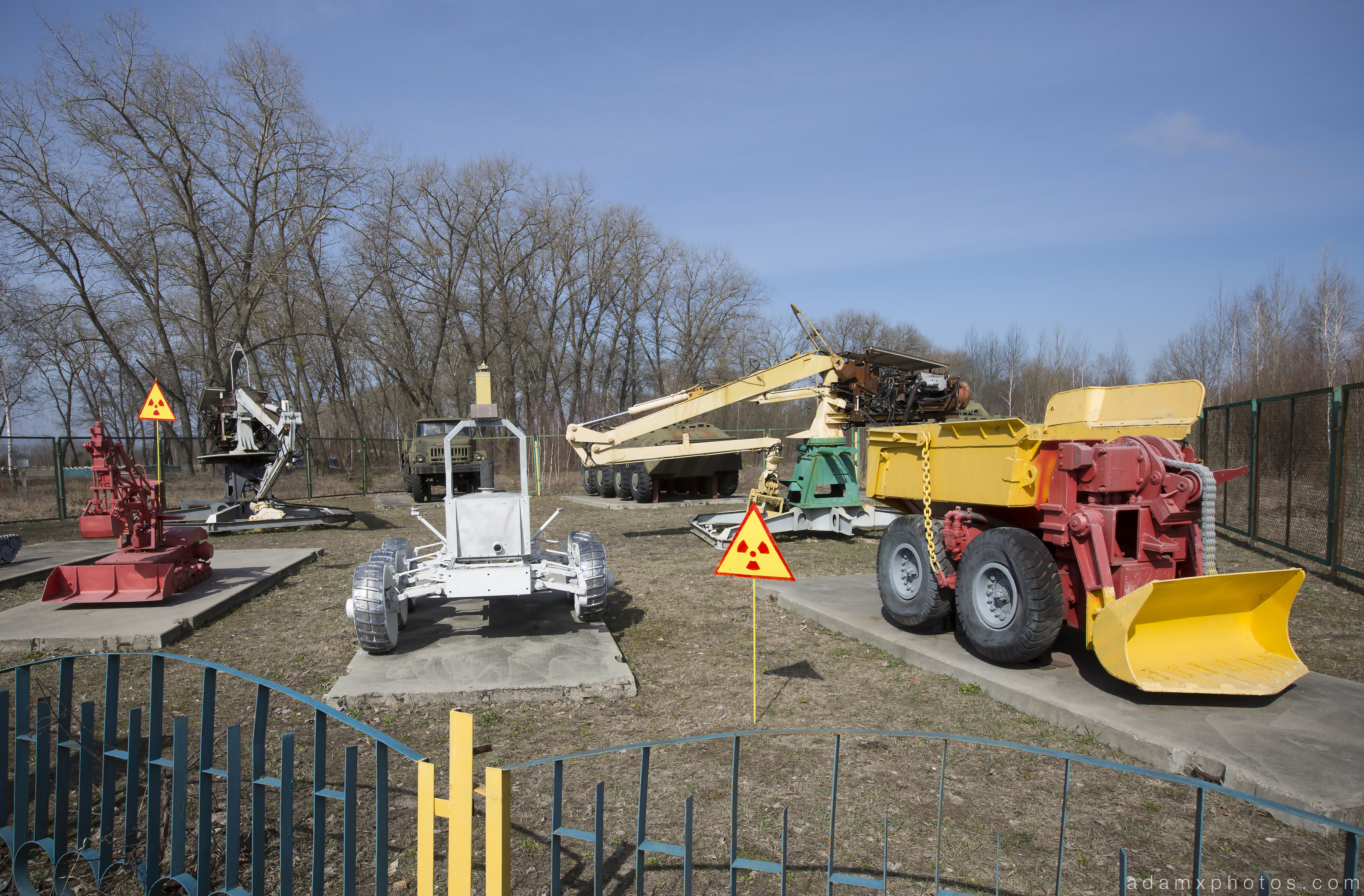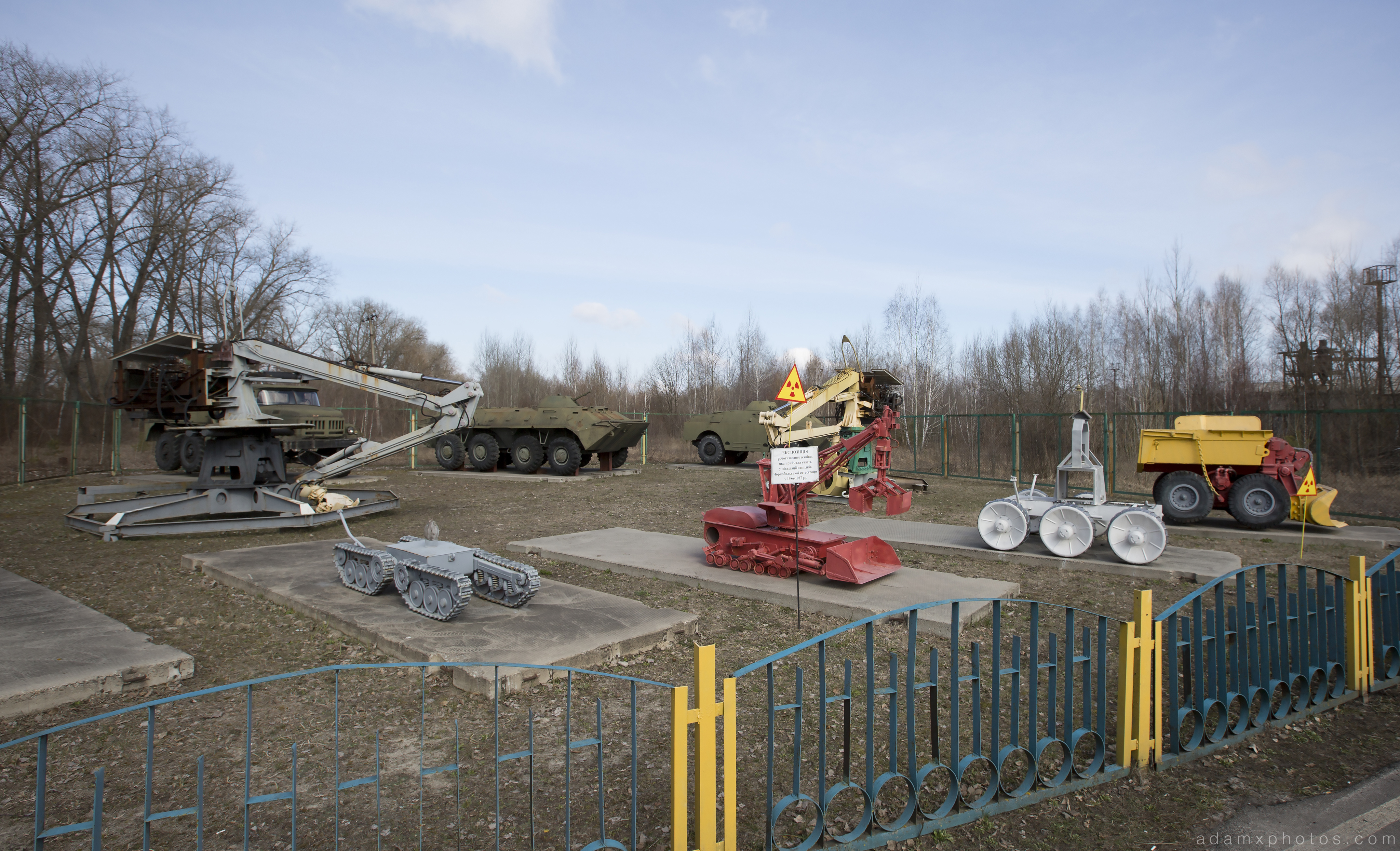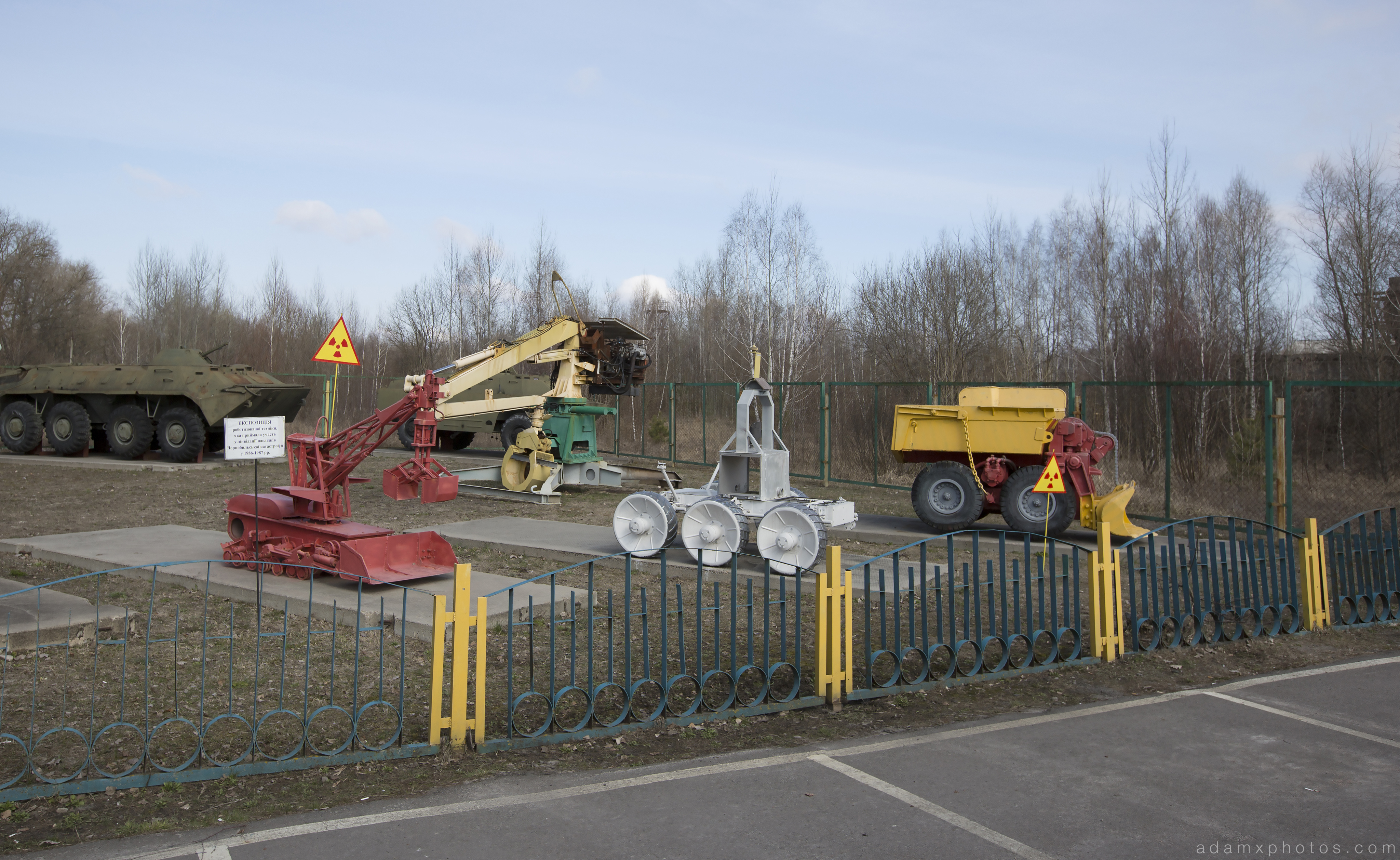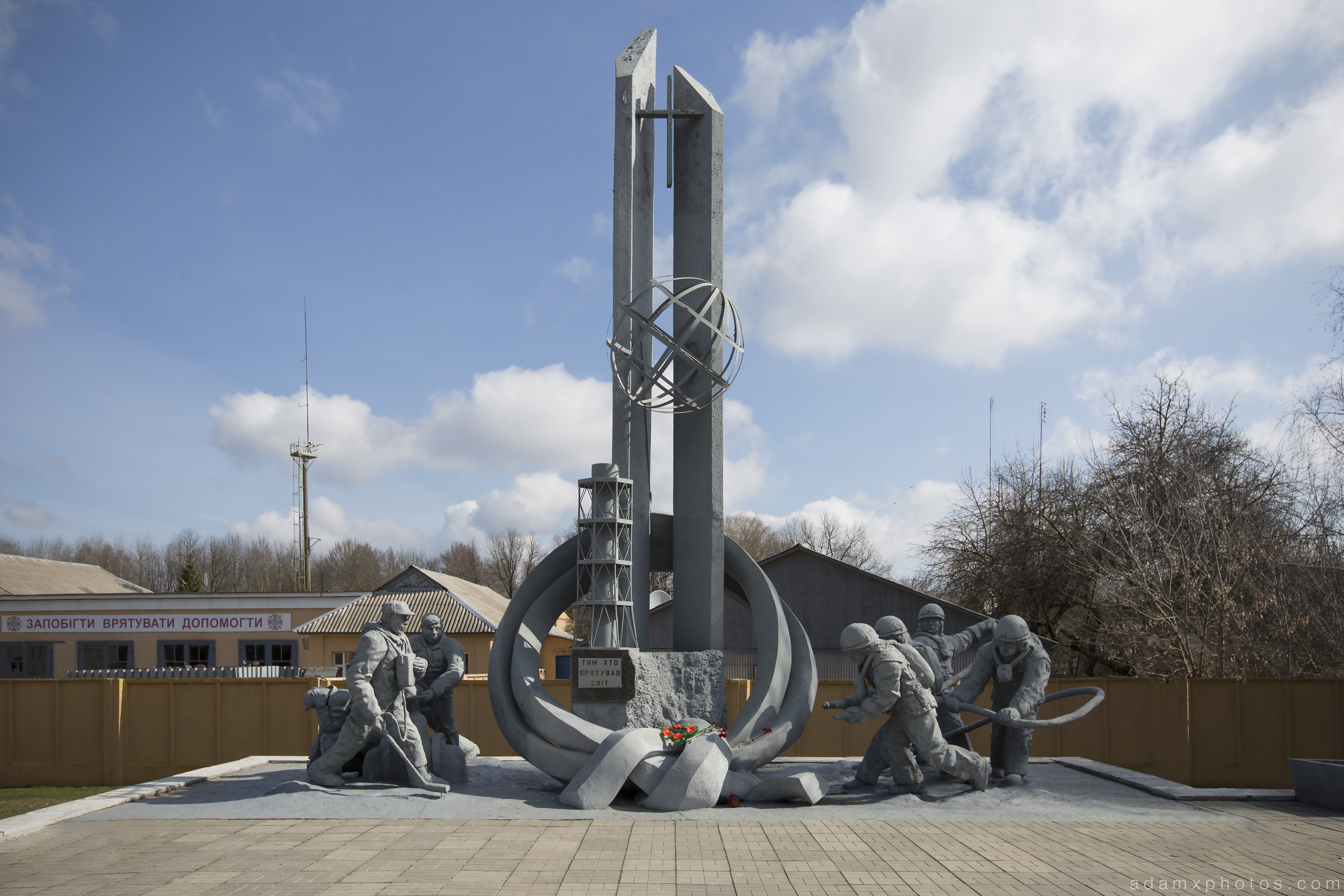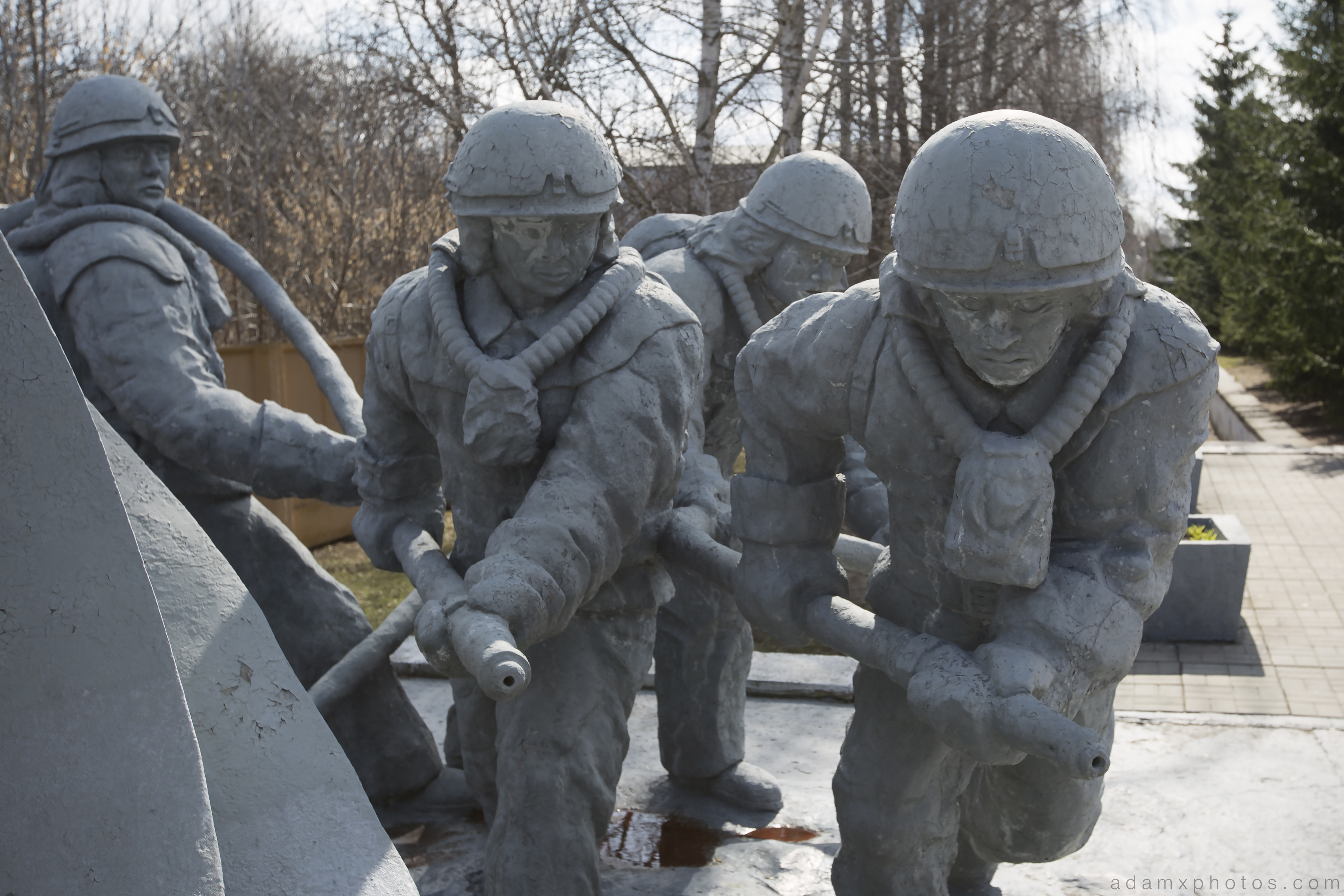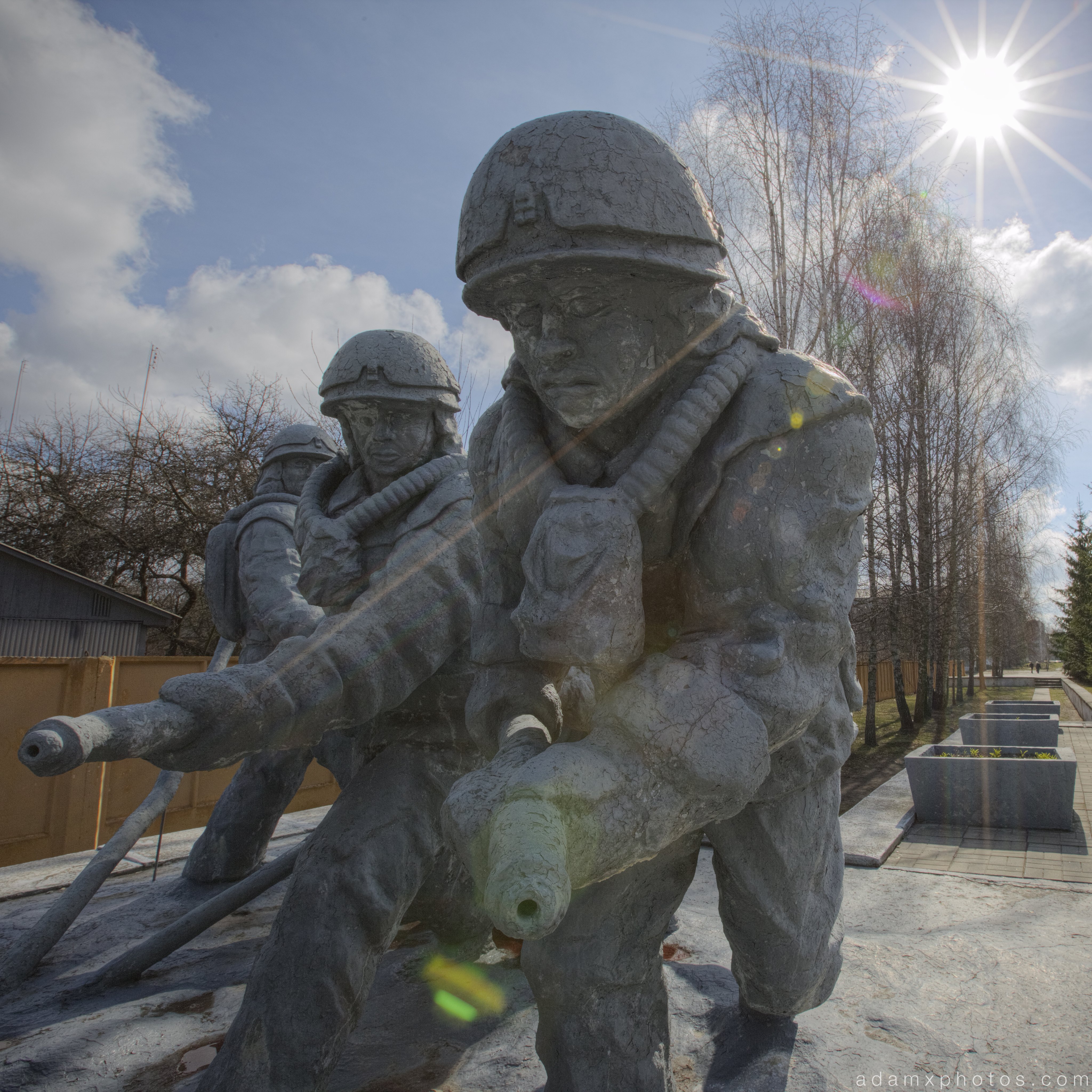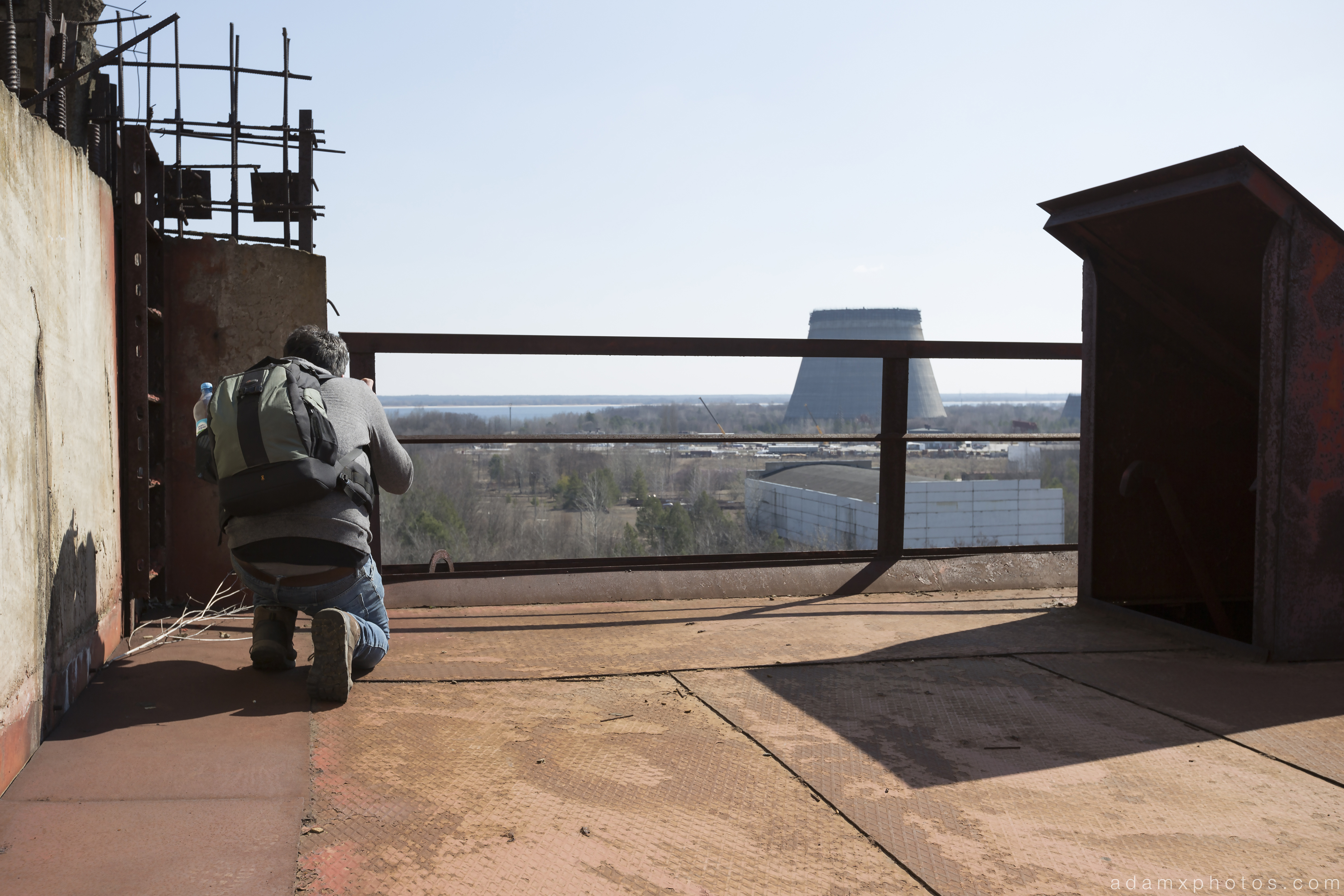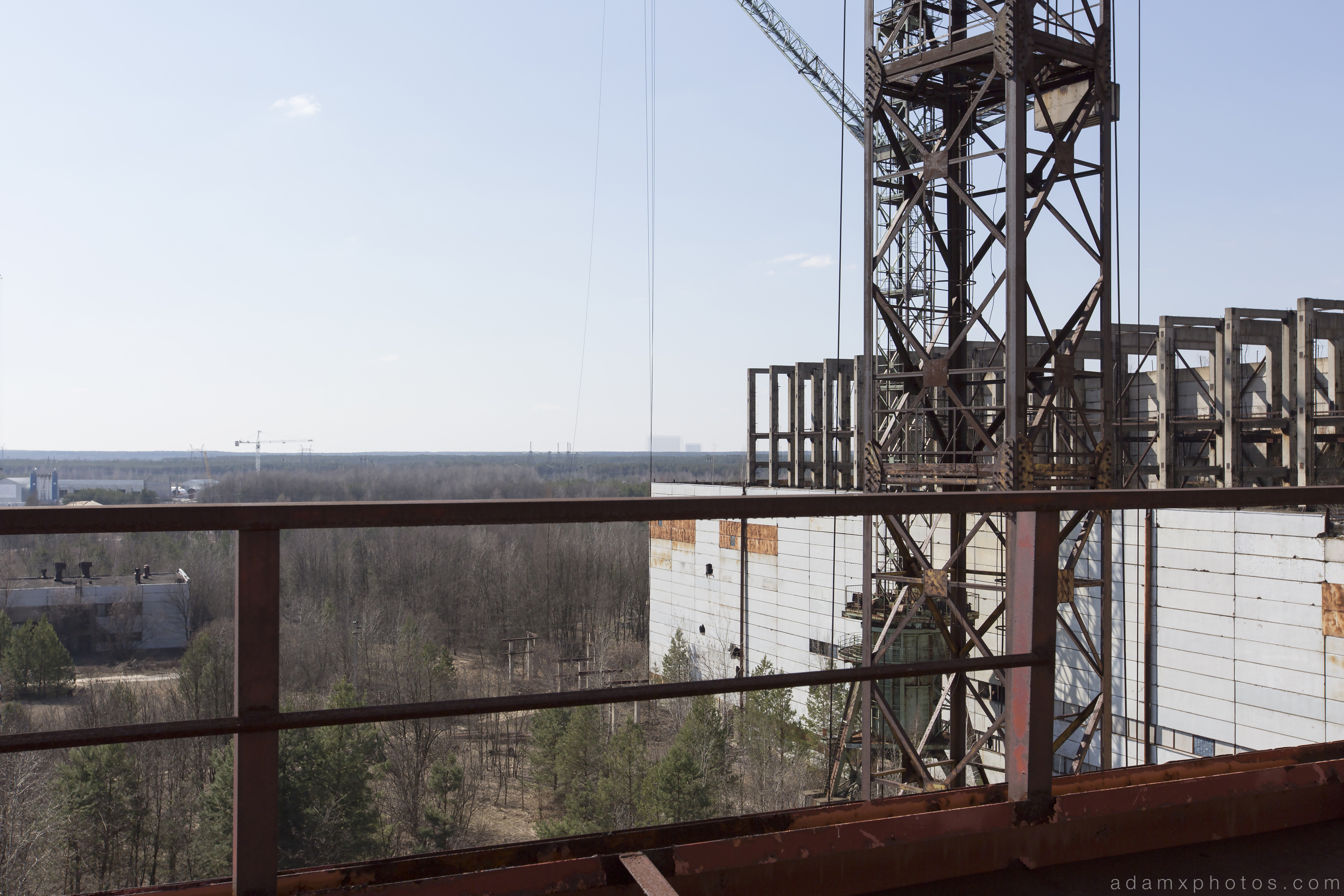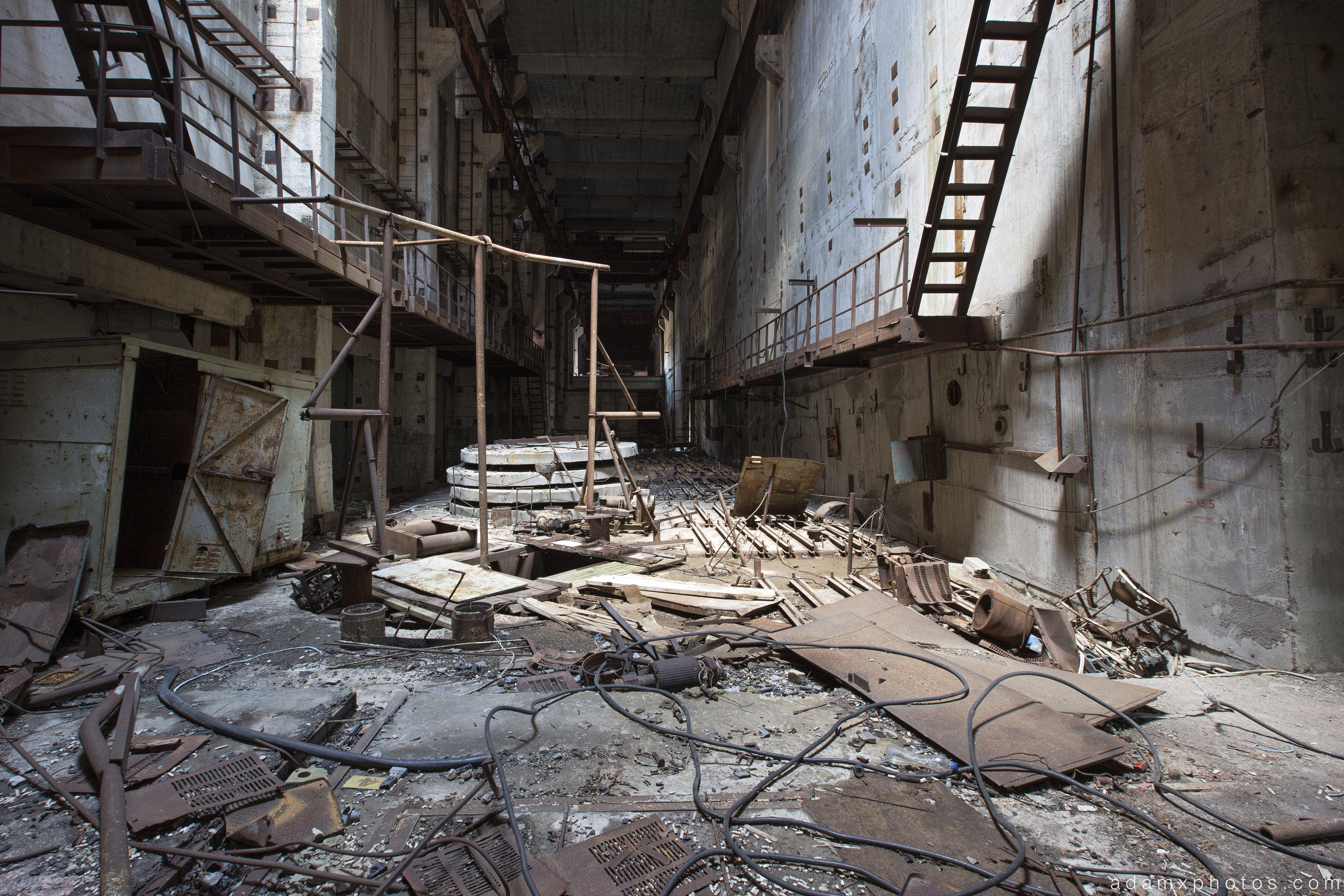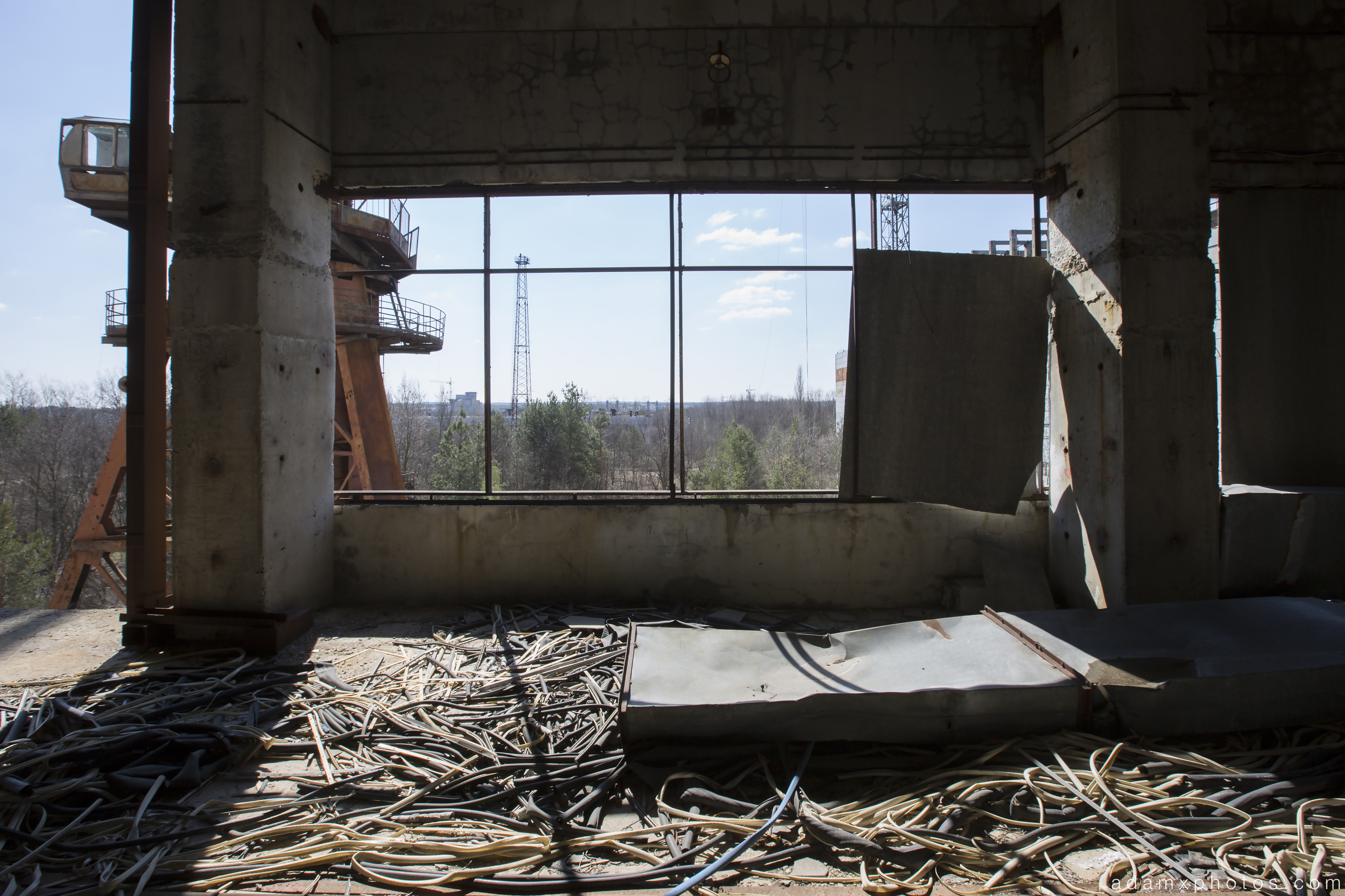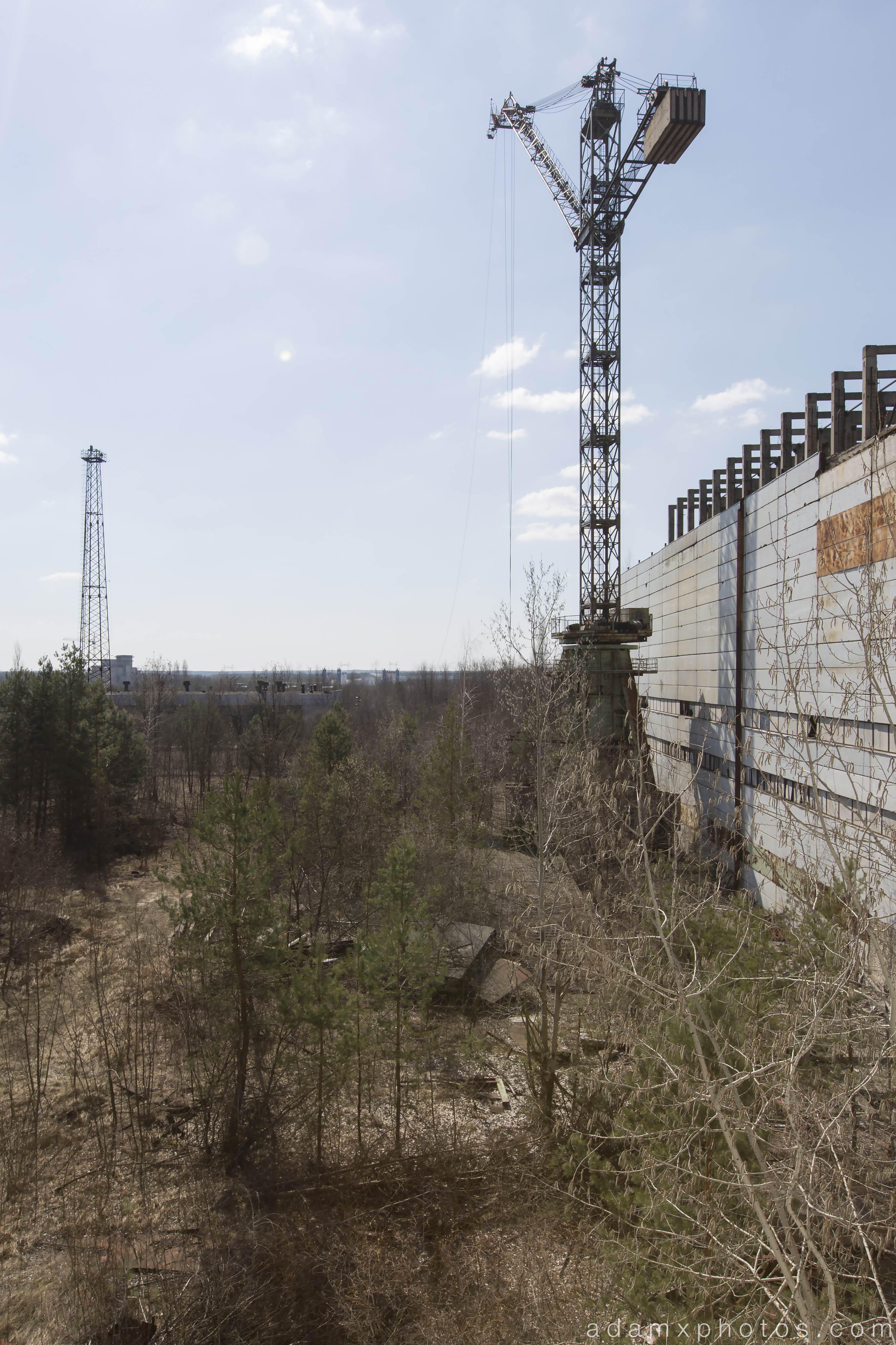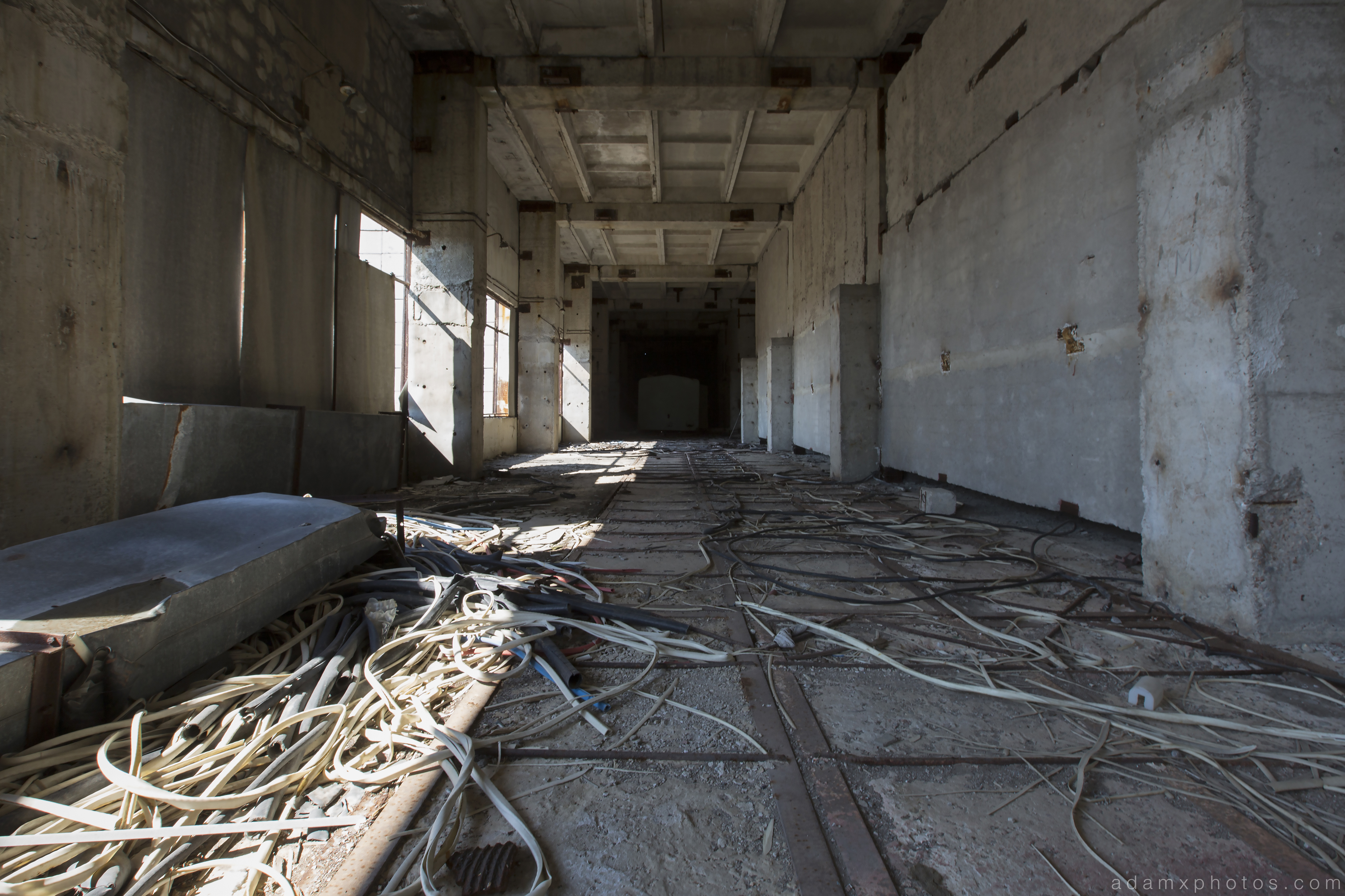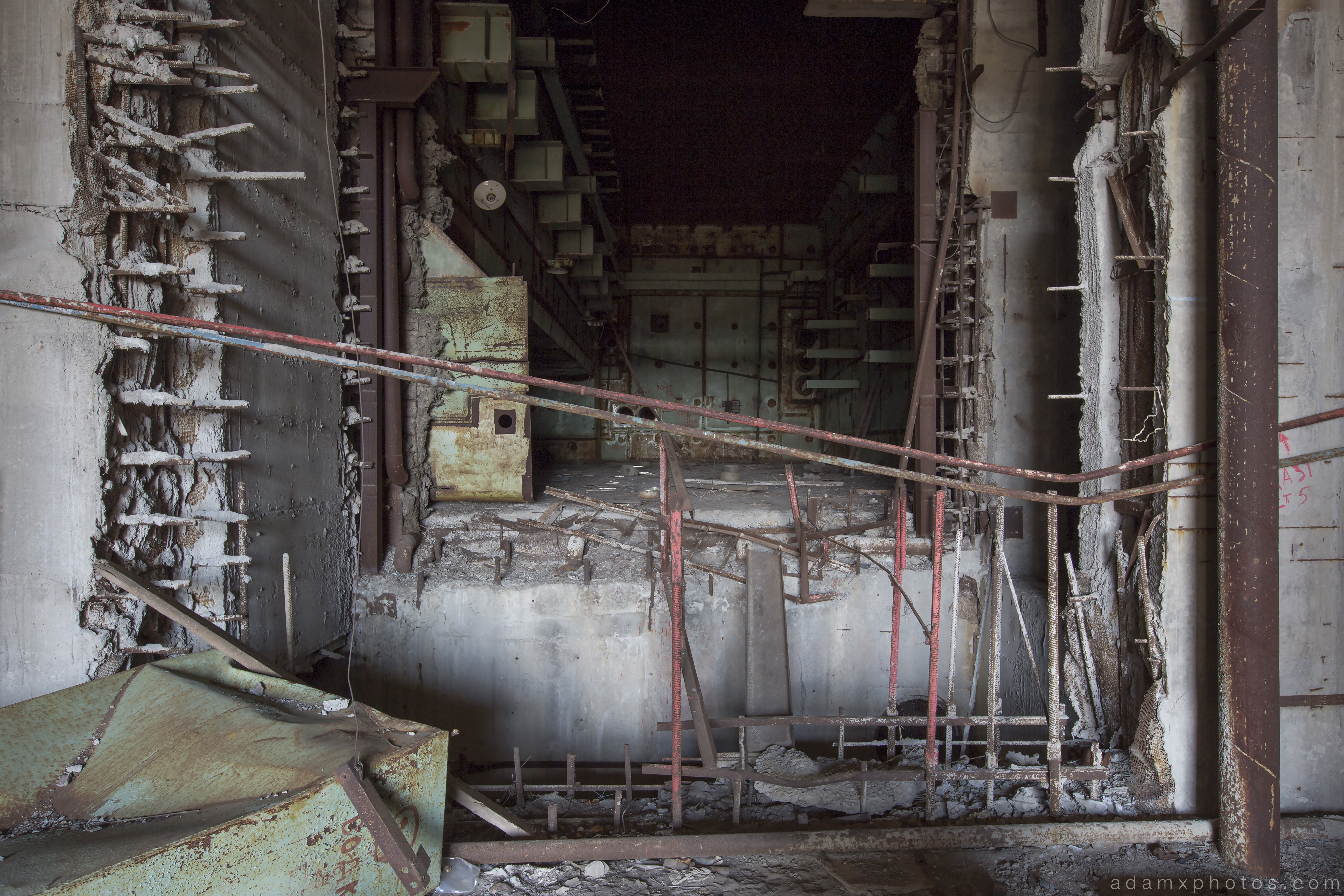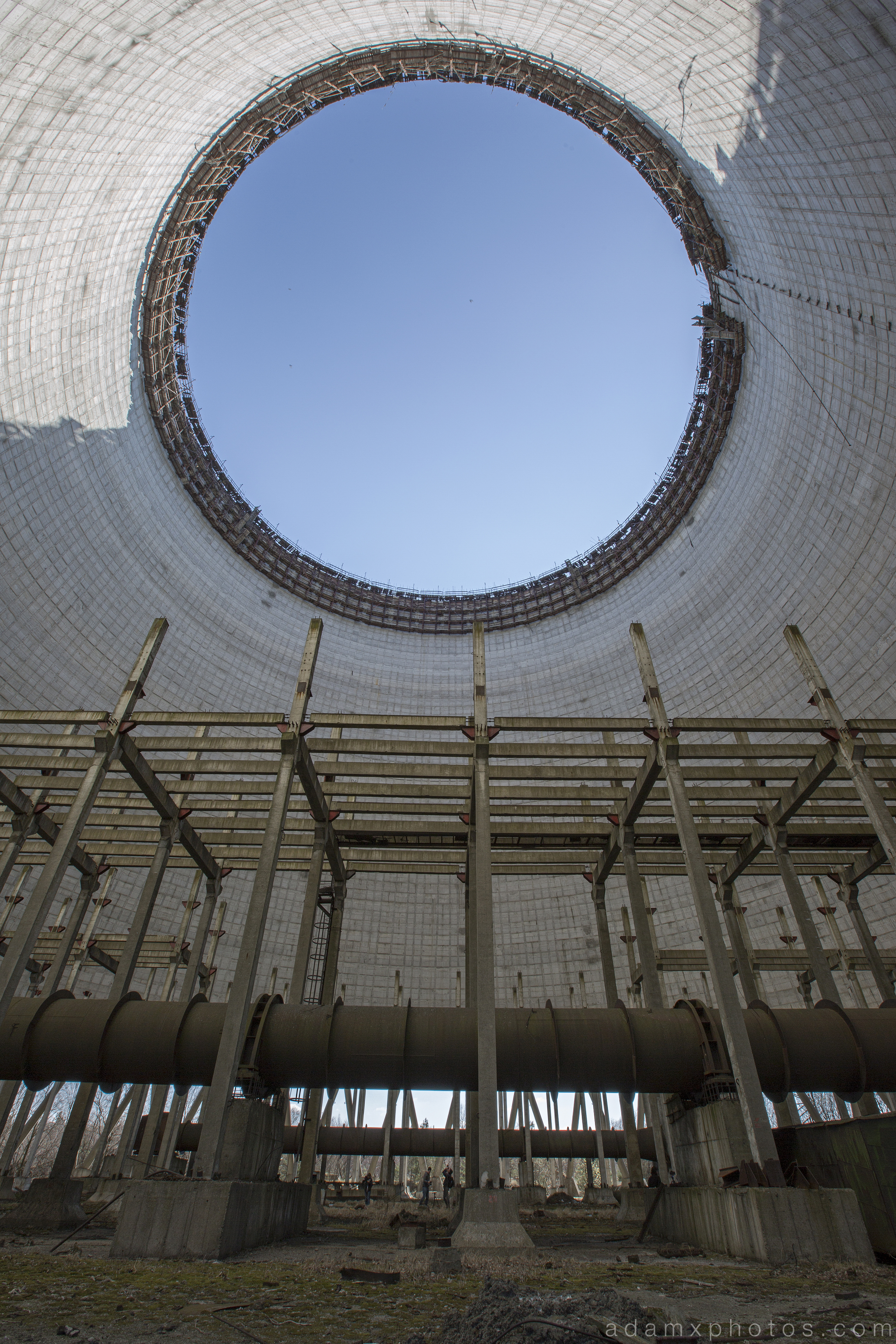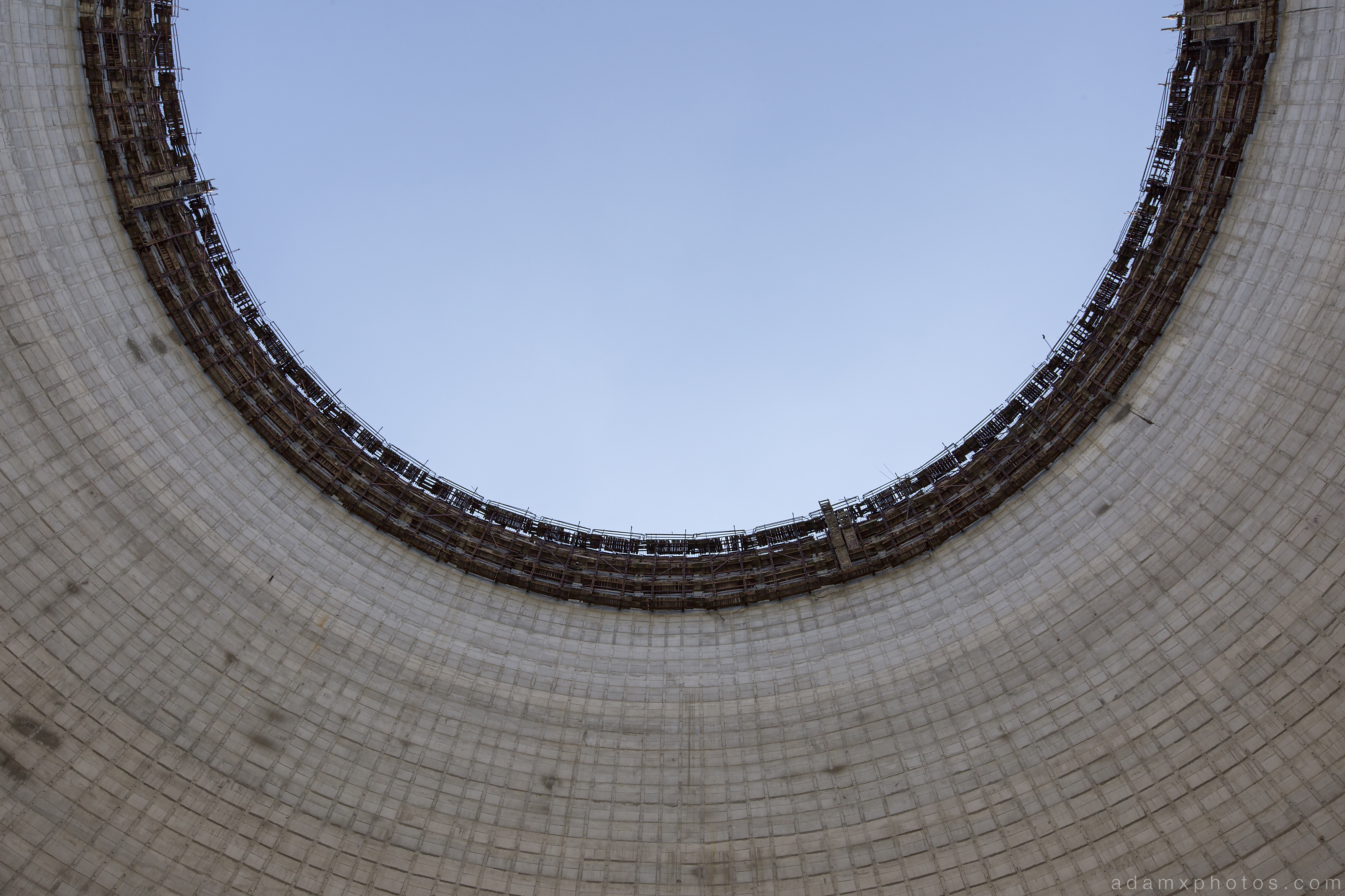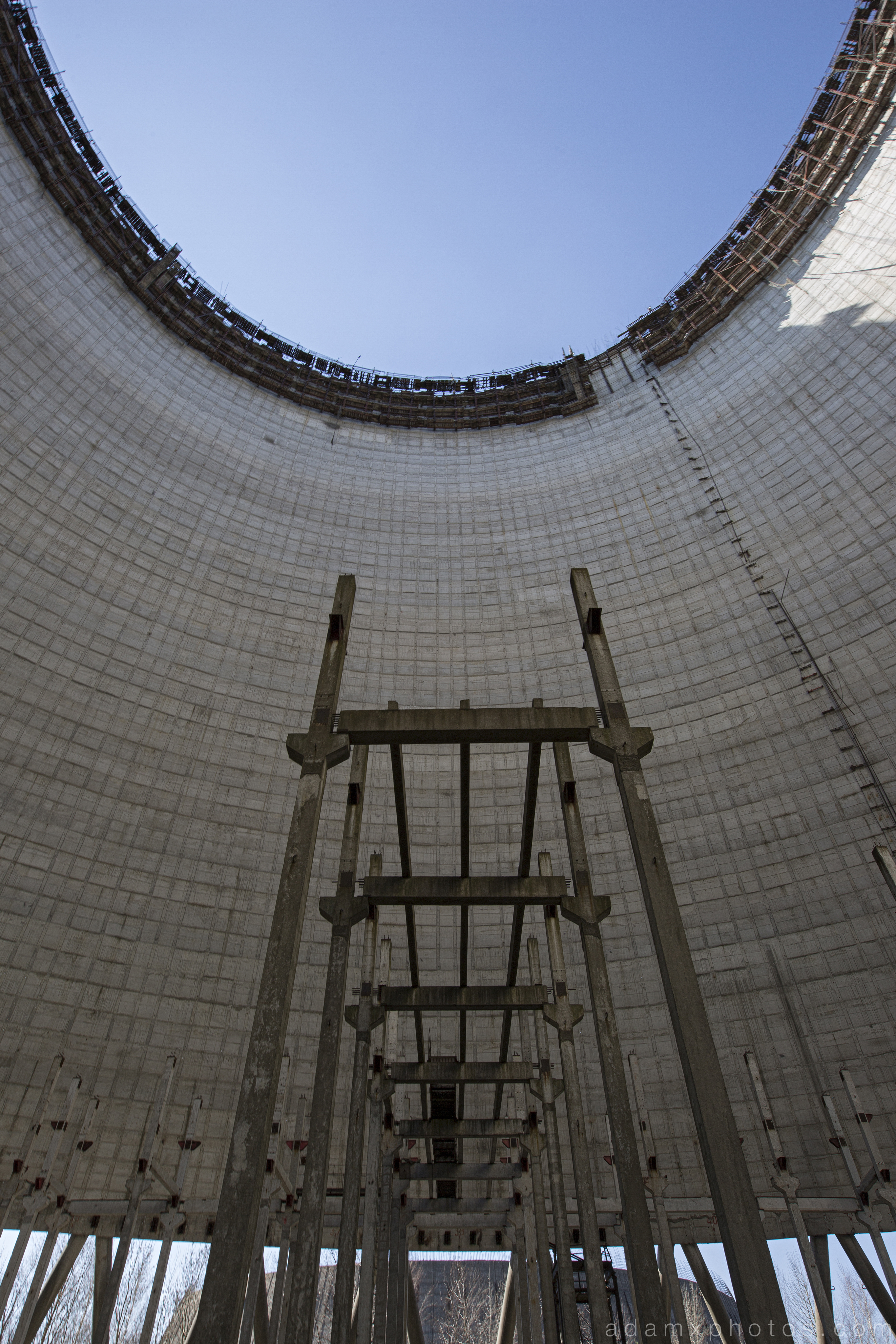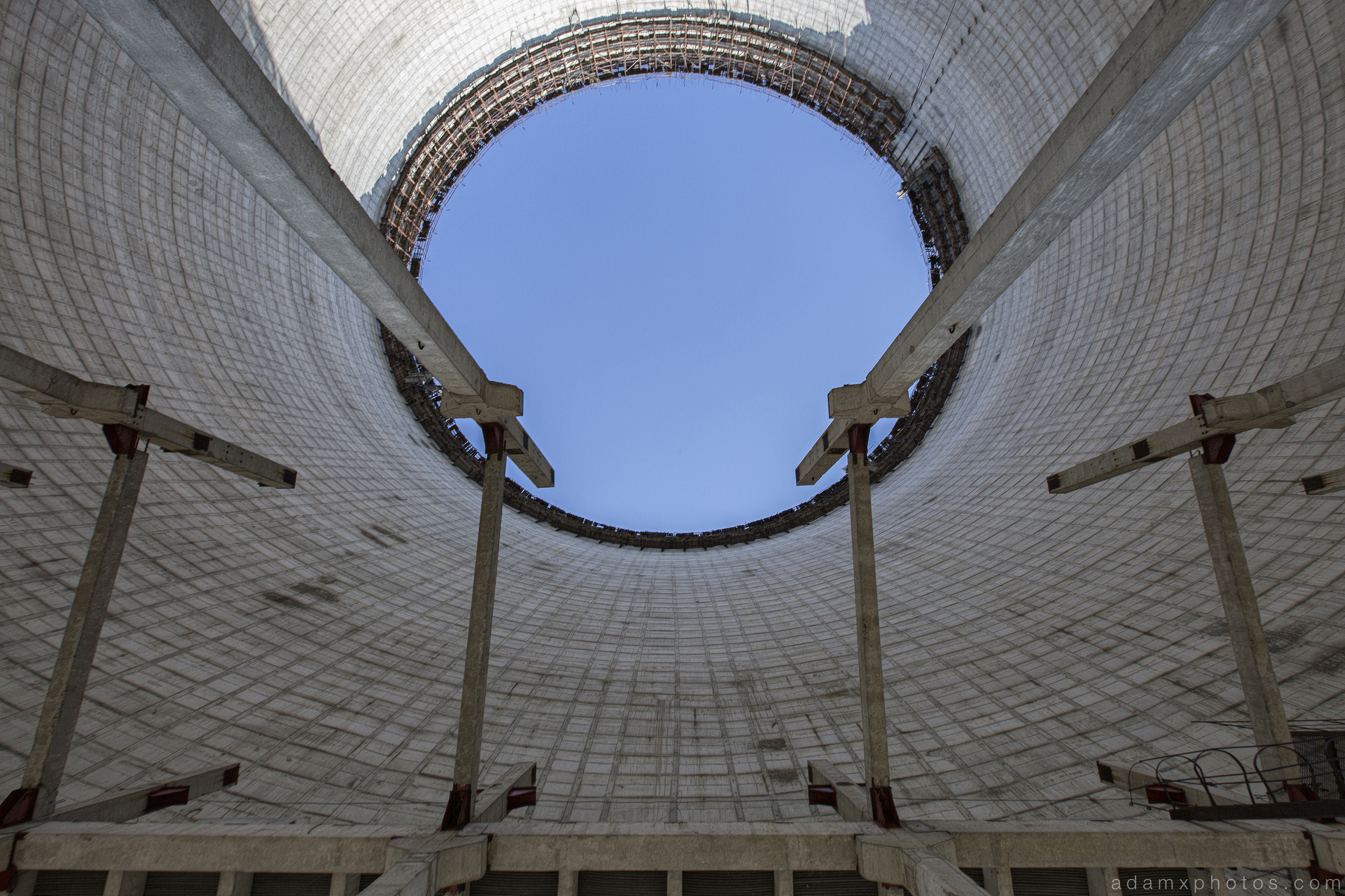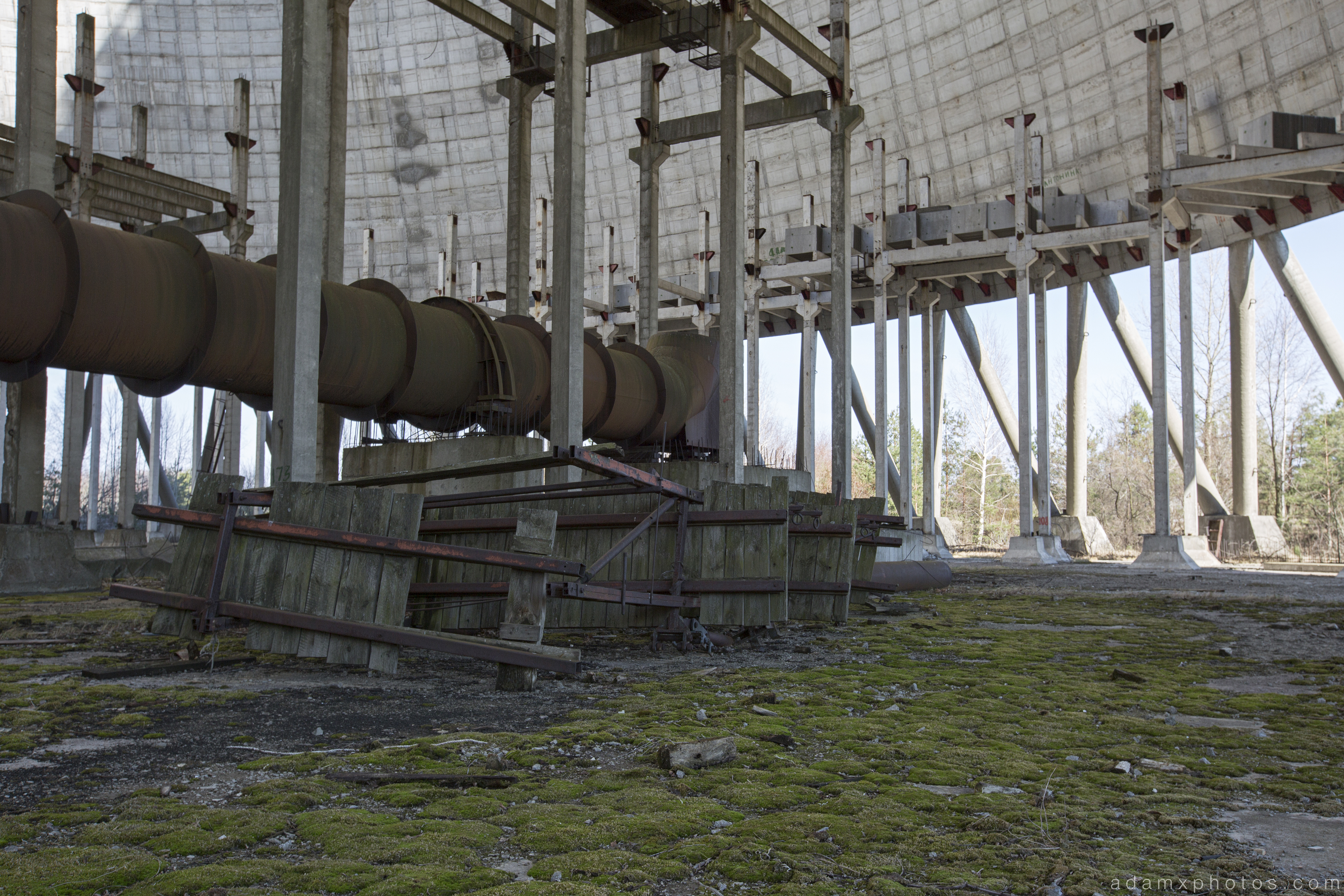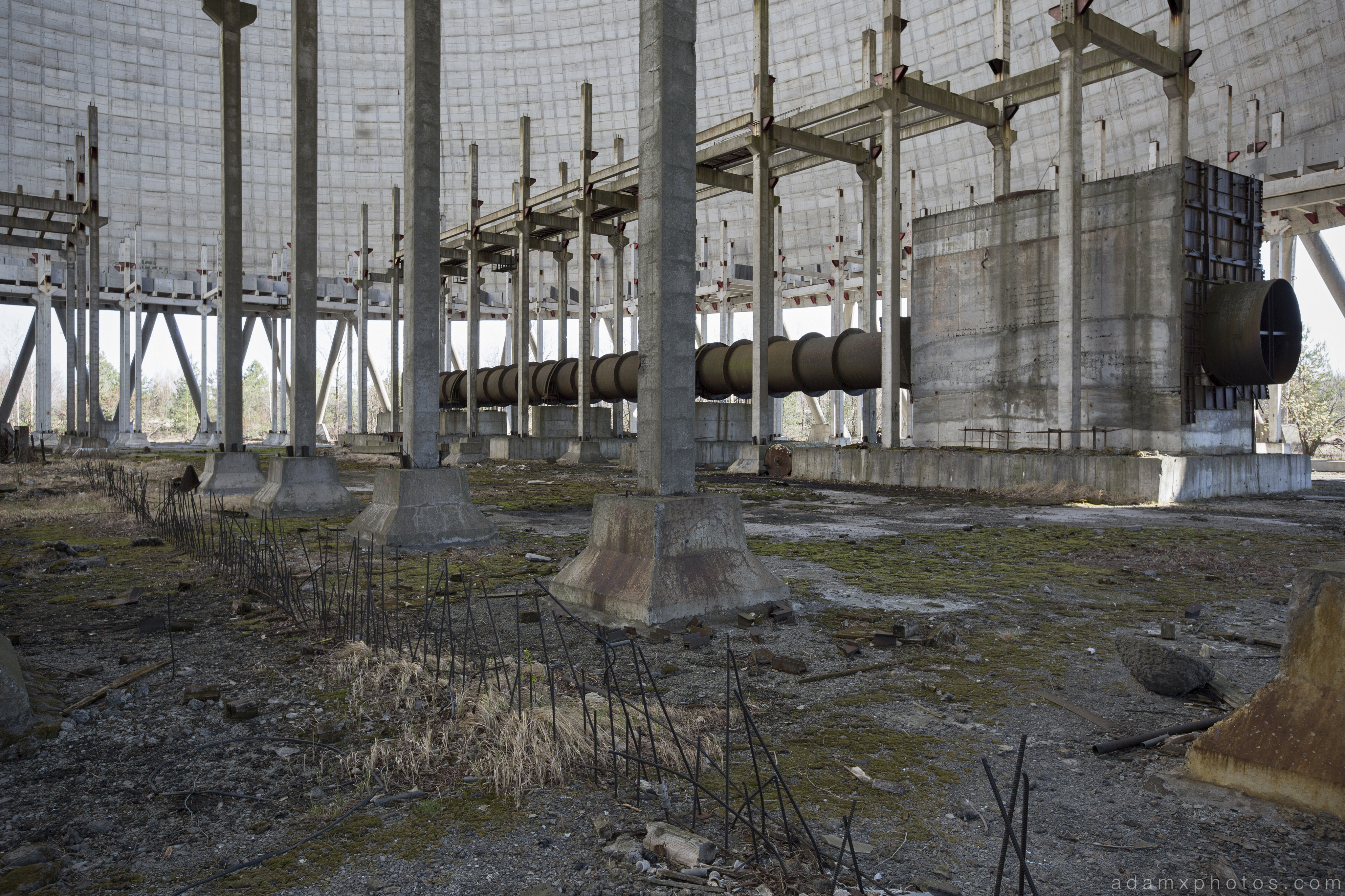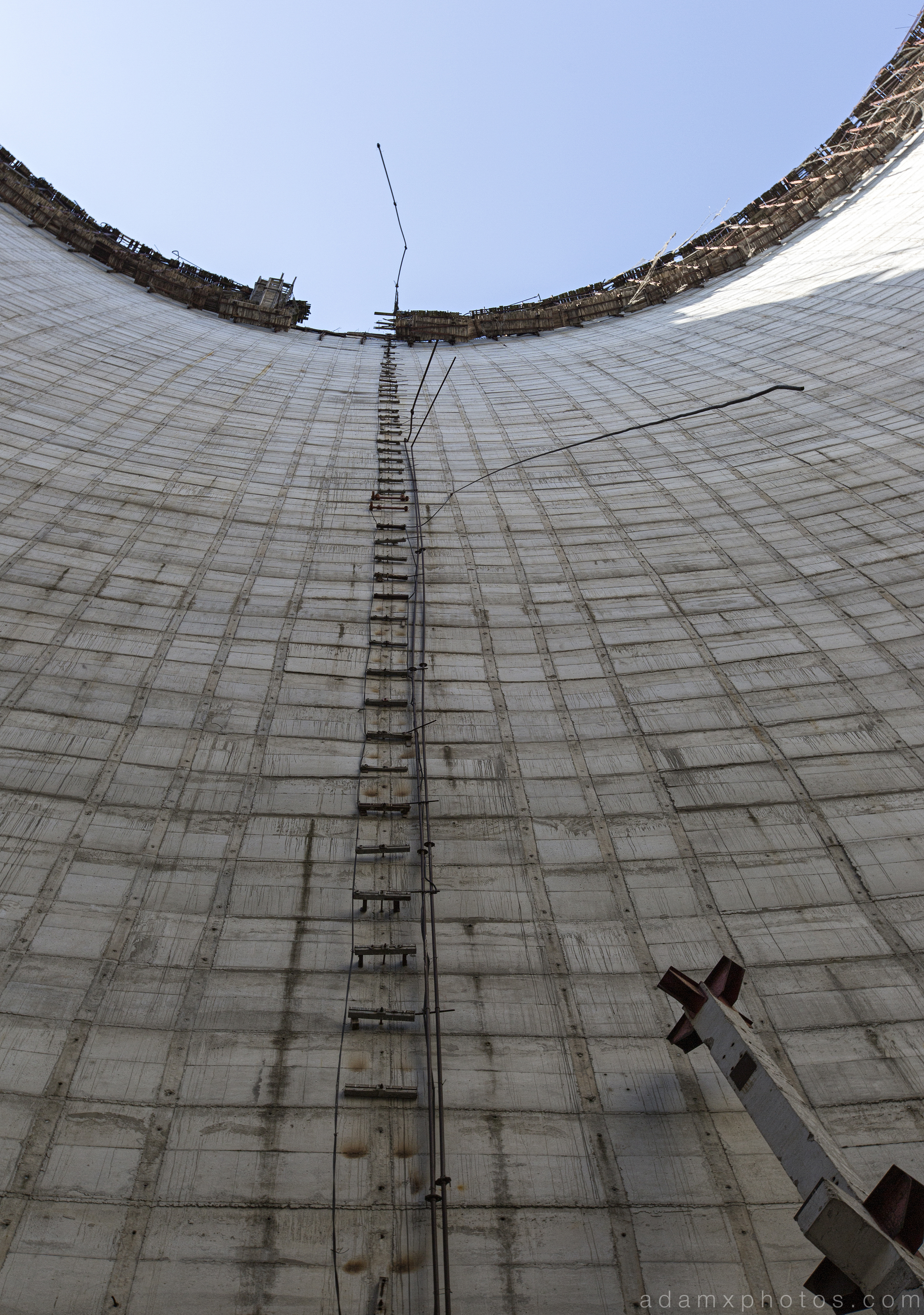In April 2015 I spent an unforgettable 4 days exploring the radioactively contaminated exclusion zone in and around Chernobyl, now part of Ukraine.
I went with a group of about 30 other urban explorers, many of whom had been a number of times before. Rather than paying for expensive day trips all the way from Kiev we were able to stay in the workers’ city of Slavutych and take a train with the workers each morning directly into ‘the zone’. Over the course of 4 days we paid multiple visits to the abandoned city of Pripyat, together with smaller villages and camps in the neighbouring region, reactor 4 and the ‘New Safe Confinement’ which is being built to replace the existing sarcophagus, and the unfinished remains of reactor 5 and its cooling tower.
I have split my photos from the trip into categories rather than sticking strictly to chronological order. As I complete the reports I will add hyperlinks between them.
It seems only proper that my first report deals straight with the main event – Reactor 4 and the surrounding area…
History (amended and abridged from wikipedia)
The V.I. Lenin Nuclear Power Station as it was known during Soviet times consisted of four reactors, each capable of producing 1,000 megawatts of electric power, built 1 miles Northwest of the city of Chernobyl. Construction of the plant and the nearby city of Pripyat to house workers and their families began in 1970, with Reactor No. 1 commissioned in 1977, followed by Reactor No. 2 (1978), No. 3 (1981), and No. 4 (1983). Two more reactors, Nos. 5 and 6, were under construction in 1986 at the time of the catastrophic accident at reactor 4. Now part of Ukraine, at the time of the accident it was officially the Ukrainian SSR and was under the direct jurisdiction of the central authorities of the Soviet Union.
On 26 April 1986 during a test at reactor 4 of a potential safety emergency core cooling feature there was a sudden and unexpected power surge, and when an emergency shutdown was attempted an exponentially larger spike in power output occurred, which led to a reactor vessel rupture and a series of steam explosions. These events exposed the graphite moderator of the reactor to air, causing it to ignite. The resulting fire sent a plume of highly radioactive fallout into the atmosphere and over an extensive geographical area, including Pripyat. The plume drifted over large parts of the western Soviet Union and Europe. From 1986 to 2000, 350,400 people were evacuated and resettled from the most severely contaminated areas of Belarus, Russia, and Ukraine.
Thirty-one deaths are directly attributed to the accident, all among the reactor staff and emergency workers. An UNSCEAR report places the total confirmed deaths from radiation at 64 as of 2008. The Chernobyl Forum predicts the eventual death toll could reach 4,000 among those exposed to the highest levels of radiation (200,000 emergency workers, 116,000 evacuees and 270,000 residents of the most contaminated areas); this figure is a total causal death toll prediction, combining the deaths of approximately 50 emergency workers who died soon after the accident from acute radiation syndrome, nine children who have died of thyroid cancer and a future predicted total of 3940 deaths from radiation-induced cancer and leukemia. Also based upon extrapolations from the linear no-threshold model of radiation induced damage, down to zero, the Union of Concerned Scientists estimates that, among the hundreds of millions of people living in broader geographical areas, there will be 50,000 excess cancer cases resulting in 25,000 excess cancer deaths.For this broader group, the 2006 TORCH report, commissioned by the European Greens political party, predicts 30,000 to 60,000 excess cancer deaths. In terms of non-scientific publications, two affiliated with the anti-nuclear advocacy group Greenpeace, have been released, one of which reports the figure at 200,000 or more
The Chernobyl disaster was the worst nuclear power plant accident in history in terms of cost and casualties. It is one of only two classified as a level 7 event (the maximum classification) on the International Nuclear Event Scale, the other being the Fukushima Daiichi nuclear disaster in 2011. The battle to contain the contamination and avert a greater catastrophe ultimately involved over 500,000 workers and cost an estimated 18 billion rubles. During the accident itself 31 people died, and long-term effects such as cancers are still being investigated.
I highly recommend watching the excellent documentary by the Discovery Channel, ‘The Battle of Chernobyl’.
Our visit
The road to the power plant…
The ‘New Safe Confinement’ (NSC) is intended to replace the existing ‘sarcophagus’ which was hastily designed and constructed between May and November 1986. The primary goal of the NSC is to prevent the reactor complex from leaking radioactive material into the environment and the secondary goal is to allow a future partial demolition of the old structure. Construction has cost an estimated €1.5bn, and after numerous delays is expected to be completed in 2017.
It is perhaps unsurprising that we recorded the highest ambient radiation readings of the trip when stood outside Reactor 4. However, to put this reading of 7.72 microsieverts per hour into context the background radiation at cruising altitude during our flight to Ukraine was 3.34 μSv/h. According to this website, examples of radiation doses are:
10 μSv – The average radiation you received today
40 μSv – The radiation you receive by taking a flight from New York to L.A.
100 μSv – The radiation you receive during a dental x-ray
3,000 μSv – Radiation dose from a mammogram
3,600 μSv – Average radiation a US citizen receives in a year from all sources
50,000 μSv – Maximum allowable yearly occupational dose (USA)
100,000 μSv – Lowest yearly dose likely linked to increased cancer risk
2,000,000 μSv – Severe radiation poisoning (sometimes fatal)
Just sitting back on the bus with the doors still open, the glass windows cut the radiation noticeably to 3.49 μSv/h. My mate James was suitably chuffed. 🙂
Looking back towards the site at dusk that evening.
The roof robots and memorial to the liquidators
One of the most moving aspects of the disaster was the fate of the brave young soldiers, known as ‘liquidators’, who were sent to roof of crumbling Reactor 4 to try and clear it of radioactive debris in immediate aftermath. Initially the authorities tried to send everything from converted moon rovers to radio-controlled bulldozers to try clear the debris, but they soon succumbed to radiation, moisture and debris. In desperation they resorted to volunteer human labour to to do the job. Given no protective equipment they fashioned their own from leather and any lead they could find. They were sent up in pairs for 20 seconds at a time, 24 hours a day for 3 weeks. Nearly all received fatal doses of radiation and died.
Some of the ‘robots’, recently repainted, sit in a small lot near to Reactor 4…
We also visited the monument to the brave firefighters and volunteers whose efforts are widely credited with preventing a potentially even more catastrophic second explosion. The plaque is inscribed “To those who saved the World”.
Reactor 5 and Cooling Tower
We were also lucky enough to get to explore the decaying remains of the partially built Reactor 5…
I’m not 100% sure we were supposed to be allowed inside the reactor – I suspect not, given the dark and dangerous conditions inside. We were told by our guide “do not go onto the roof” in case workers decommissioning other nearby buildings saw us and raised a fuss with the authorities. Naturally, being explorers, a few of us immediately ‘accidentally’ headed straight up onto the roof for a few quick shots. 😉
In the distance is the incomplete cooling tower to Reactor 5, which we also explored…
Inside the half-built reactor…
We also visited the nearby cooling tower…
Thanks for viewing – lots more from my trip coming up very soon.
Cheers
Adam X
